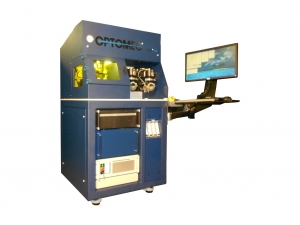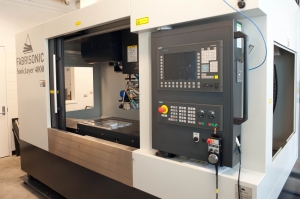Model : LENS 450XL from Optomec
Capacity : 91 x 58 x 48 cm (36 x 23 x 19’’)
Work zone : 10 x 10 x 10 cm (4 x 4 x 4’’)
Characteristics :
Additive manufacturing of parts using metallic powder
Addition on existing parts
Repairs of parts
Elaboration of varying chemical composition depending on the location in the part
Rapid alloy discovery
Cladding with metals, ceramics or metallic glasses
The LENS 450XL 3D printer builds metallic or ceramic parts by projection of metallic (or ceramic) powder into a laser beam. This technology differs from other metallic 3D printer in which the laser beam pass through a powder bed. The LENS technology can, by opposition to the powder bed technologies, repair and add section to existing parts. Additionally, it is possible to build parts in which the composition will vary with the location. This allows to optimize mechanical properties and corrosion resistance.

This machine is unique in Québec province and in Canada.
 This machine is unique in Québec province and in Canada.
This machine is unique in Québec province and in Canada.
 This machine is unique in Québec province and in Canada.
This machine is unique in Québec province and in Canada.